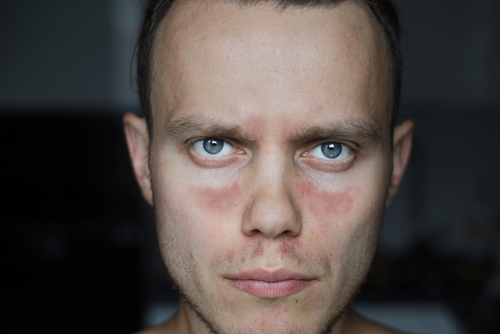Deucravacitinib (Sotyktu, Bristol-Myers Squibb) may help improve cutaneous manifestations in patients with systemic lupus erythematosus, according to a late-breaking study presented at MauiDerm 2024.
Deucravacitinib is a first-in-class, oral, selective, allosteric tyrosine kinase 2 inhibitor approved in multiple countries for the treatment of adults with moderate to severe plaque psoriasis.
In the 48-week, double-blind, phase 2 PAISLEY trial, patients with active systemic lupus erythematosus (SLE) who received deucravacitinib showed superior efficacy when compared with their counterparts who received a placebo. The study’s s primary endpoint was Systemic Lupus Erythematosus Responder Index-4 (SRI[4]) response at week 32. People who received deucravacitinib also fared better across all key secondary endpoints, including a ≥ 50% reduction in CLASI activity score from baseline (CLASI-50) in patients with moderate to severe skin involvement at baseline (CLASI score ≥ 10), the study showed. CLASI- 50 achievement was more frequent among patients treated with deucravacitinib in all cutaneous subtypes assessed than among those treated with placebo.
This study “signals efficacy in cutaneous lupus erythematosus, and we don’t have good therapies for cutaneous lupus so this is really promising for our specialty,” Joel M Gelfand, MD, MSCE, the James J. Leyden Professor of Dermatology & Epidemiology, Director of the Center for Clinical Sciences in Dermatology, Director Psoriasis & Phototherapy Treatment Center at the University of Pennsylvania Perelman School of Medicine in Philadelphia, tells TDD. Dr. Gelfand co-chaired the late-breaker session at Maui Derm 2024
The study included patients with active SLE and a baseline CLASI score of ≥ 10 who received placebo (n = 24) or deucravacitinib 3 mg BID (n = 23), 6 mg BID (n = 25), or 12 mg once daily (QD; n = 29). Researchers calculated response rates in patients who sustained CLASI-50 from weeks 32 through 48, a ≥ 70% reduction in CLASI activity score (CLASI-70) at week 48 and CLASI-50 by SLE cutaneous manifestation subtype using a nonresponder imputation. Investigators used Systemic Lupus International Collaborating Clinics criteria to classify patients in ≥ 1 subcategory (acute, subacute, chronic, or discoid) at screening; all patients classified as discoid were included in the chronic subgroup. Biopsy confirmation was not required for this study.
More patients receiving deucravacitinib sustained CLASI-50 for five consecutive visits between weeks 32 and 48 (placebo, 12.5%; deucravacitinib 3 mg BID, 56.5%; 6 mg BID, 36.0%; 12 mg QD, 58.6%) and achieved CLASI-70 at week 48 (placebo, 8.3%; deucravacitinib 3 mg BID, 65.2%; 6 mg BID, 36.0%; 12 mg QD, 58.6%) than patients receiving placebo. What’s more, patients receiving deucravacitinib achieved CLASI-50 at week 48 more often than patients receiving placebo in all subtypes assessed (acute: placebo, 15.0%; deucravacitinib 3 mg BID, 68.4%; 6 mg BID, 54.2%; 12 mg QD, 60.0%; subacute: placebo, 0.0%; deucravacitinib 3 mg BID, 100.0%; 6 mg BID, 33.3%; 12 mg QD, 80.0%; chronic: placebo, 18.2%; deucravacitinib 3 mg BID, 72.7%; 6 mg BID, 46.2%; 12 mg QD, 64.3%; discoid: placebo, 25.0%; deucravacitinib 3 mg BID, 71.4%; 6 mg BID, 45.5%; 12 mg QD, 66.7%), the study showed.


